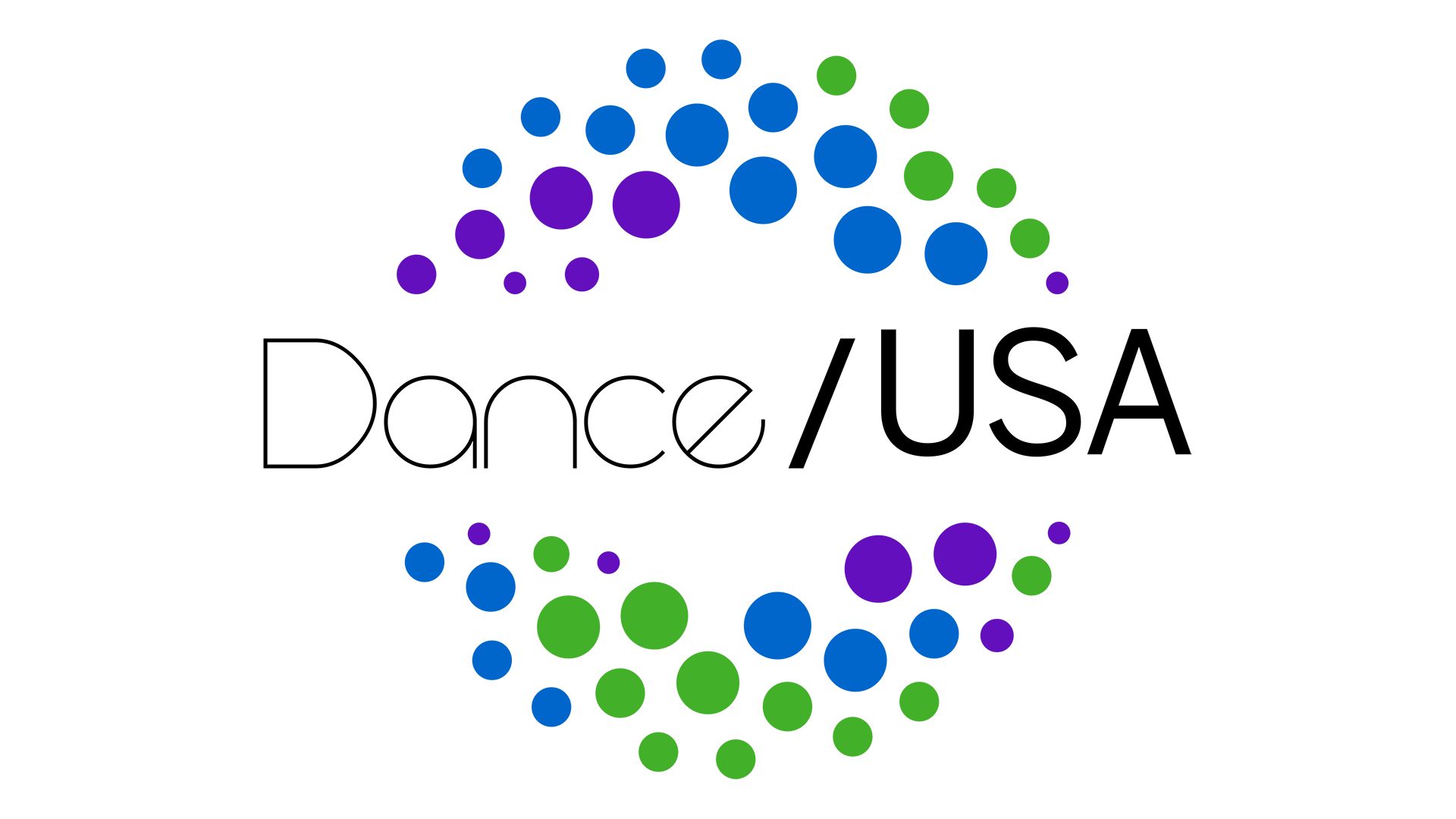Cleo Parker Robinson, 2017 Dance/USA Honoree: For Decades She Has Been Driven By the Mission of Inclusivity

Cleo Parker Robinson in her office on April 5, 2017, accompanied by images of her greatest mentors and influences. From left to right, poet Maya Angelou, Martin Luther King, Jr., and choreographer Katherine Dunham. Photo credit: Stephanie Wolf.
By Stephanie Wolf
Something about the Cleo Parker Robinson Dance Performing Arts Complex in Denver makes you want to speak in hushed tones and walk with extra care. Maybe it’s out of reverence to the 24,000 square-foot space that was once an African-American Episcopal church before it housed three dance studios, an art gallery and a theater. The pews have been replaced by rows of plush seats sloping up from the stage.
When the building is packed with dance students or patrons, it is not as tranquil. But no matter the hour or capacity, this space is sacred to Cleo Parker Robinson, who will receive the 2017 Dance/USA Honor Award at this year’s Dance/USA Annual Conference. And as she sits in the audience on a spring afternoon, watching her dancers rehearse onstage, there’s a spirituality to the way she speaks to her dancers.
“There needs to be meaning and purpose in every move,” she says to the dancers — her hands illustrating at the same cadence as her words.

Cleo Parker Robinson Dance Ensemble in “Arranged,” choreographed by Milton Myers. Photo credit: Sue Daniels.
On stage, the 11 members of the Cleo Parker Robinson Dance Ensemble listen closely to Robinson’s feedback. Some mark through movements with their hands, arms and upper bodies. They’re rehearsing Porgy and Bess for the company’s spring performance. This is Robinson’s dance interpretation of the 1930s opera composed by George Gershwin with a libretto by DuBose Heyward. It tells stories of the residents of a fictional impoverished black community in Charleston, South Carolina.
Robinson concludes rehearsal with, “And now we start promoting.” Business has always gone hand-in-hand with the art for Robinson — and she’s had to be dogged to get both done.
Born With an Artist’s Soul
Robinson was born on July 17, 1948. Her father, Jonathan Parker, was black and her mother, Martha Mae Roberts, was white. They met in the band room at University of Denver — Parker attended the school, while Roberts was passing through as an apprentice musician with the San Diego Symphony. Robinson says her parents’ love was instant and the music further solidified their devotion.
Interracial marriages were not legal in Colorado until 1957 and were not legal at the federal level until 1967. Robinson says her parents traveled to five states in the hopes to marry. They ended up tying the knot in Mexico.
“I’m so baffled by their determination,” Robinson says. “They loved each other so much that they would [take on any of the challenges] that came with that kind of division. They let their love reign over all of the bias.”
She spent her early years in Denver’s Five Points neighborhood, known as the “Harlem of the West” for its vibrant jazz scene. Robinson says, as a baby, she slept in a dresser drawer in her parents’ room at the Rossonian Hotel. The historic hotel’s lounge earned a reputation for its jazz club, hosting such musical icons as Duke Ellington, Nat King Cole and Count Basie.
Robinson was too young at the time to have vivid memories, but says being “born in that vibration and the power of what it was” is something she has a real sense of in her soul. Her parents loved to dance, she says, and that was something that they passed on to Robinson and her three siblings: “My parents would turn on music and we’d dance throughout the house. It was just a part of what we did.”
Her family moved to Dallas when Robinson was 10. While racism and segregation existed at that time in Denver, Robinson says she was not prepared for the deep racial divides in Texas. There she experienced “hardcore segregation.”
Robinson recalls waking up one morning, her whole body swollen. Her kidneys had failed. She was rushed to the hospital, but Dallas’ medical facilities were segregated. When her family could not find a hospital that would admit a child of mixed race fast enough, Robinson had a heart attack and the doctor told her family her weak heart would leave her bedridden indefinitely.
“It was so bizarre for me to be restricted to a certain area and to a certain experience that I think it almost killed me,” Robinson says. “I think that people have no idea how you can become ill physically if you kill the human spirit.”
Robinson’s family decided to return to Denver. She would defy the doctor’s premonition, but Robinson says she was often nervous her heart could give out and, while dance called to her, she approached it with trepidation.
Finding Her Footing
Before moving to Dallas, Robinson had taken some dance lessons at the Salvation Army Denver Red Shield community center with Ernestine Smith, a black ballet and vaudeville dancer. When Robinson returned to Denver, her father took a maintenance job at the now-defunct Bonfils Theatre. He was soon acting in the theater’s productions and the whole family got involved. The experience exposed Robinson to musicals and, she says, it “opened up a whole new world” for her.
Robinson attended Colorado Women’s College, now housed at the University of Denver, and studied dance there, but she says she questioned pursuing a performance career. “In every [ballet] class, there was no one that looked like me — there were no black ballet dancers,” Robinson says. “If you walk in a room and there’s no one who resembles you, you think you don’t belong.”
After her experiences in Dallas, Robinson says she didn’t feel like she could make enough of a social impact by joining a ballet or even modern dance company. One of her dance professors encouraged her to go to New York and seek out choreographer and teacher Katherine Dunham.
Bursting Open the Bubble
Robinson took her first trip to New York City at 19. That trip exposed her to Dance Theatre of Harlem founder Arthur Mitchell, Alvin Ailey American Dance Theater, and Dunham — who would later become one of Robinson’s greatest mentors. Robinson says witnessing the respect young students paid to these teachers and seeing dancers who looked like her was transformative. When she returned to Denver, she was enraged — “Why wasn’t Denver as progressive as New York City?”
It’s okay to be angry sometimes, Robinson says, “because it takes you to your core and to your essence. Then I knew my mission really was to educate and to heal — and dance was the tool.”
In 1970, 21-year-old Robinson started choreographing, worked as a dance therapist with people of all ages and backgrounds and taught movement throughout Colorado, including “communities that had never seen dance.” Robinson had recently married, graduated from college and was still trying to figure out how to create the space for dancing and healing she envisioned.
Then she saw a classified ad in the newspaper. The Denver Model Cities Program, established in the 1960s with federal funds to revitalize blighted neighborhoods, had an opening for someone to direct its dance school. Robinson says she got the job on the spot and, when soon after her hiring the director of the entire cultural program was let go, Robinson took on that position. The Model Cities soon lost its funding, but the seed for Robinson’s own dance company and school had already been planted and, with the help of community partnerships, Cleo Parker Robinson Dance became a nonprofit in 1974.
“None of it was planned, yet divinely it was planned,” Robinson says of how it came together. “You know that you’re on some kind of journey. I don’t know that you get to make the journey. You get to respond to the journey.”
Robinson says she immediately took her company on the road to expose her dancers to different teachers, forms of dance, and cultures. In 1977, Cleo Parker Robinson Dance Ensemble (CPRDE) performed for more than 70 countries at an international arts festival in Nigeria.
“Once I saw New York, I knew we were not going to sit in a corner,” she says. But that never came at the cost of the local community — the company performed in prisons, in schools and for Colorado African-American organizations. “It was a wonderful time,” Robinson says. “It was so demanding and we wanted to prove we could be excellent.”
Schyleen Qualls, who is a writer and producer in the Bay Area, was a founding member of Robinson’s company, performing poetry with the troupe for the first decade of its existence.
“We were in our early 20s and we believed we could do anything we dreamed,” she says of the early years.
Qualls says meeting Robinson changed her life for the better: “When you are in her presence, you feel good and you feel inspired to do all that you can. The company is still here and thriving because of her indomitable will. Her only speed is full speed ahead, no matter what the obstacles are.”
Dance as Activism
Themes of social justice have long been embedded in Robinson’s choreographic work, from apartheid in South Africa, to the Civil Rights Movement in the 1960s and the recent police shootings of young African-American men, such as the one in Ferguson, Missouri. Her work has also been a deep meditation on her own life. She’s collaborated with Maya Angelou, Egyptian composer Halim El-Dabh, Mexican choreographers Jairo Heli and Bethsaida Prado, the Colorado Symphony and Opera Colorado.

Cleo Parker Robinson Dance Ensemble in Granny Dances to a Holiday Drum in 2015. Dancers from left to right: Chloe-Grant Abel as “Cantadora: The Dreamweaver,” Margarita Taylor as “Granny,” and Cleo Parker Robinson as “Shakti: Granny’s Guardian Angel.” Photo credit: Stan Obert.
Robinson has also commissioned and staged works from choreographers such as former Alvin Ailey American Dance Theater dancer Milton Myers, hip hop pioneer Rennie Harris and her mentor, Katherine Dunham.
In 2012, with the help of a National Endowment for the Arts grant, CPRDE re-mounted Dunham’s searing Southland. It follows a black man in the South, who is lynched after falsely being accused of rape. Dunham debuted it in Santiago, Chile in 1951. In program notes, Dunham wrote, “This is the story of no actual lynching in the Southern states of America, and still it is the story of every one of them.”
According to the Library of Congress archives, the U.S. embassy in Chile told Dunham the work was “anti-American.” It was performed once more, in Paris in 1953, then never again — until CPRDE took it on. “It’s pretty magical to be able to go back and reconstruct a work that was banned in our country,” Robinson says.
In a review for the Denver Post, fine arts critic Ray Rinaldi wrote, “Southland had the aura of something that must be revered, and needed to be danced again … Dunham created a dance that is dramatic, even for its intense subject matter, and this troupe respected that. There was no holding back in terms of movement or acting. The work got the respect it deserved.”
Robinson’s devotion to social justice and preserving important dance works like Southland is something that many dancers have carried with them long after they left the ranks of her company. Jessica Pearson was with CPRDE for five years. She’s now an assistant professor of dance at Rhode Island College and says her time with CPRDE instilled in her a deep respect for the pioneering dance artists that came before her and how they paved the way for her to pursue the art form.
“I feel charged to carry the torch of the African-American experience in concert dance,” Pearson says.
Pearson and former company member Lawrence Jackson have committed to documenting Robinson’s legacy for academic purposes and for presentations at scholarly conferences so future generations can learn about her efforts in dance history courses. Jackson, who was with the company from 2000 to 2005, is an assistant professor of dance at the University of Alabama. He says Robinson was a great mentor who has influenced how he teaches, choreographs, and engages with the community.
“Cleo’s approach to creating work, which centers around what moves people, rather than how dancers move, continues to be my source of inspiration when creating work,” Jackson says. “She instilled in me the notion that dance can be an open forum for expression with the versatility to accommodate politics, dissent and protest.”
Building a Community
Her influence reaches deep into the Colorado arts community, but she’s also had an impact on those far beyond the state’s borders. Robinson is a founding board member of the International Association of Blacks in Dance (IABD) and still serves on its board. Denise Saunders Thompson, IABD’s president and CEO, says Robinson has been an incredible and passionate ambassador for the arts.
“Her artistic work and practice embodies and carries the message that dance is a universal language, an entry point to cultural understanding and healing,” Thompson says.
Robinson was also part of a committee in the 1980s that founded Dance/USA. She holds multiple honorary doctorates from highly respected institutions and has racked up dozens of awards for her community work and dance achievements. In 2008, the Anti-Defamation League’s Western chapter honored Robinson with its Civil Rights Award. ADL associate regional director Jeremy Shaver says the decision to give the award to Robinson was an unusual one. “Of the approximately 60 recipients since 1982, Robinson is the only choreographer or artist in the bunch,” Shaver says.
Prior to that, Robinson was inducted into the Colorado Women’s and Blacks in Colorado halls of fame. The University of Denver’s Carson Brierly Giffin Dance Library named Robinson a “Legend of Dance in Colorado” honoree in 2007. She’s also been honored by the Kennedy Center and the Urban League, among others.
“I think art is powerful; it’s absolutely poignant,” Robinson says. “And I think it’s always had a place in social movements all over the world… it’s about the human spirit.”
Standing by her side through all of this has been her husband, Tom, and her son, Malik, who began working with CPRD by helping his father with the finances. Malik became the company’s executive director in 2014. He says working close by his mom’s side has been rewarding.
“My mom is a savvy and tenacious entrepreneur, but she didn’t come into this business to manage staff, fund raise and develop strategic plans,” Malik says. “She’s an extraordinary artist, and the organization thrives when we clear the space for her to visualize and create. I find tremendous joy in helping provide the structure and means for her.”
In July, a month after accepting her Dance/USA Honor Award, Robinson turns 69. She says doing this work for nearly five decades has been tiring and at times took a toll on her body. But she ignores the aches and pains, still excited to inspire and be inspired.
“I thought I would die at 10,” she says. “‘I had decades more than I thought I would ever have. So I’m blessed every day I breathe.”

Stephanie Wolf is a producer and reporter with Colorado Public Radio. In 2014, she spearheaded an experimental project at CPR called Radio Dances, in which the traditionally visual art form of dance was reimagined for the radio. Prior to working in journalism, Wolf had a 12-year dance career with the Minnesota Ballet, James Sewell Ballet in Minneapolis, the Metropolitan Opera and Denver’s Wonderbound, formerly Ballet Nouveau Colorado. Wolf also co-founded DIYdancer, which releases its first print journal in 2017.
____
We accept submissions on topics relevant to the field: advocacy, artistic issues, arts policy, community building, development, employment, engagement, touring, and other topics that deal with the business of dance. We cannot publish criticism, single-company season announcements, and single-company or single artist profiles. Additionally, we welcome feedback on articles. If you have a topic that you would like to see addressed or feedback, please contact communications@danceusa.org.
Disclaimer: Opinions expressed in guest posts do not necessarily represent the viewpoints of Dance/USA.


